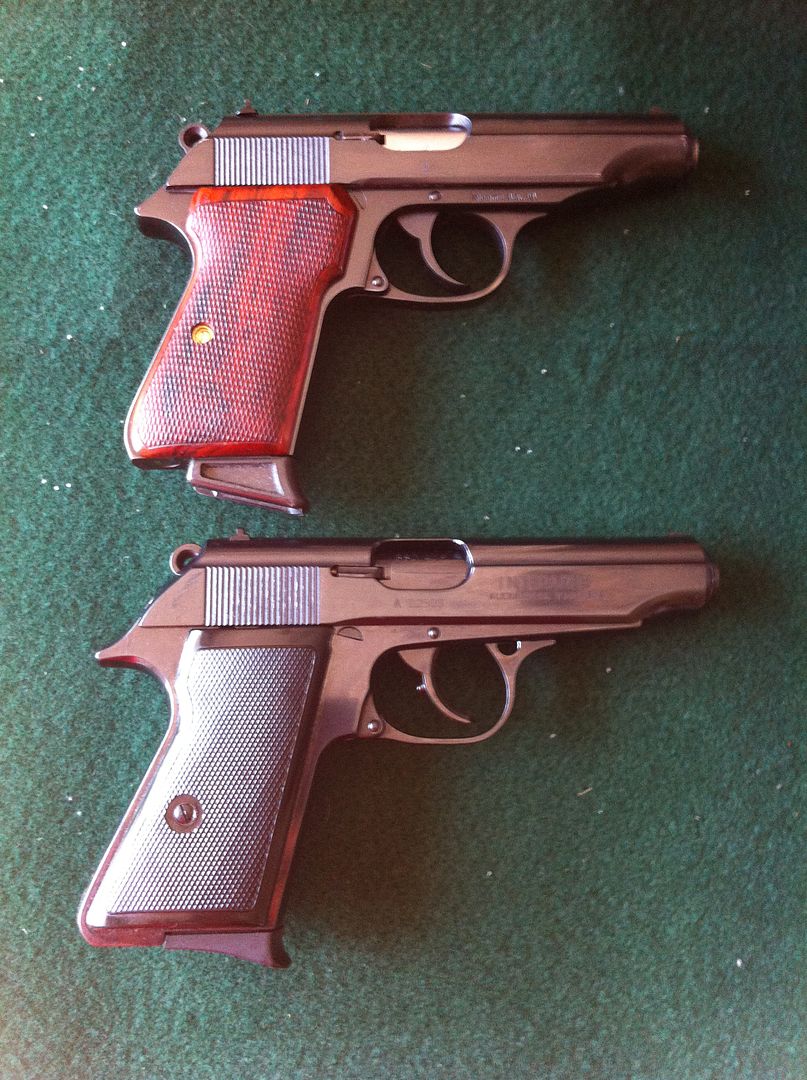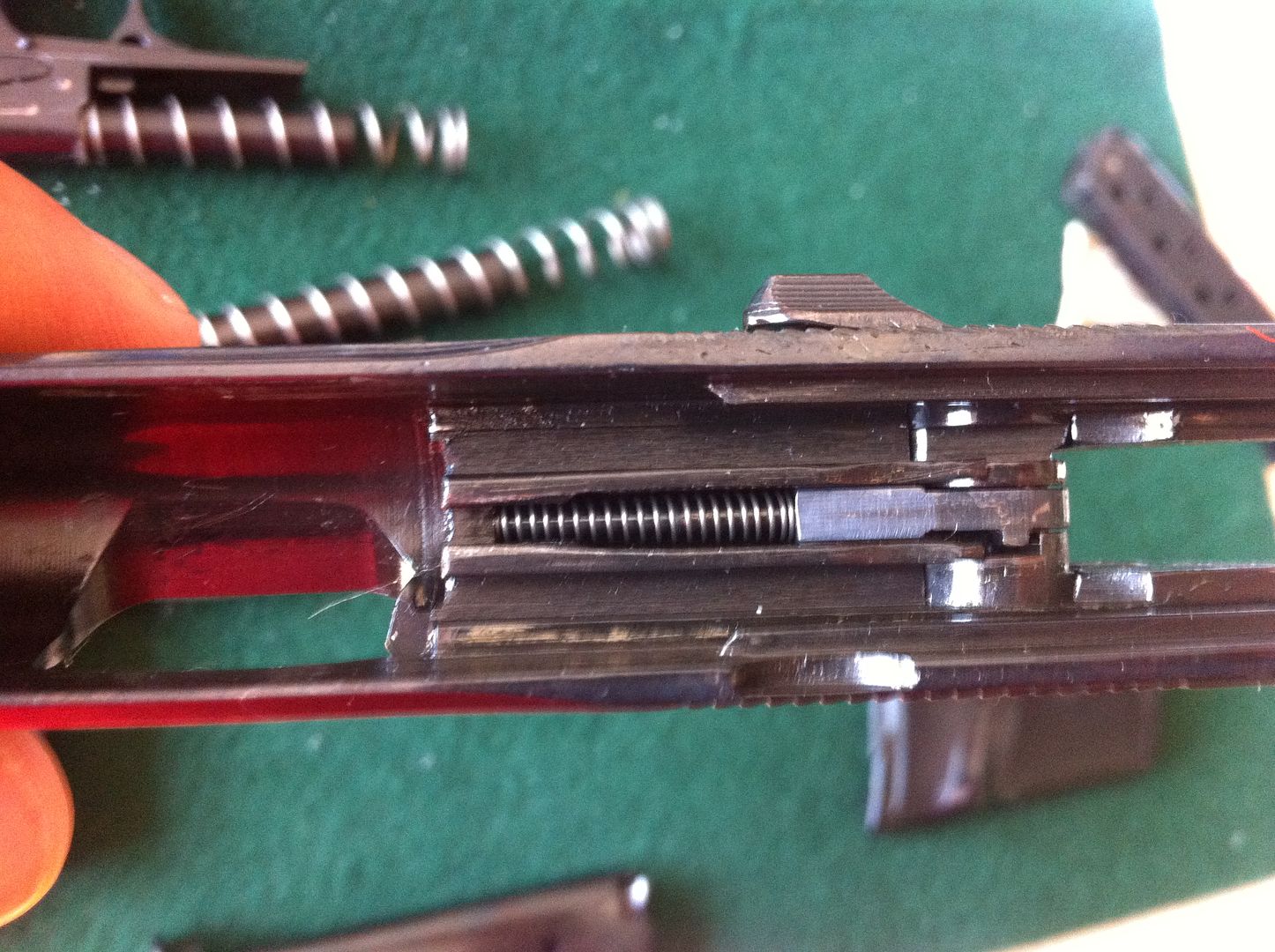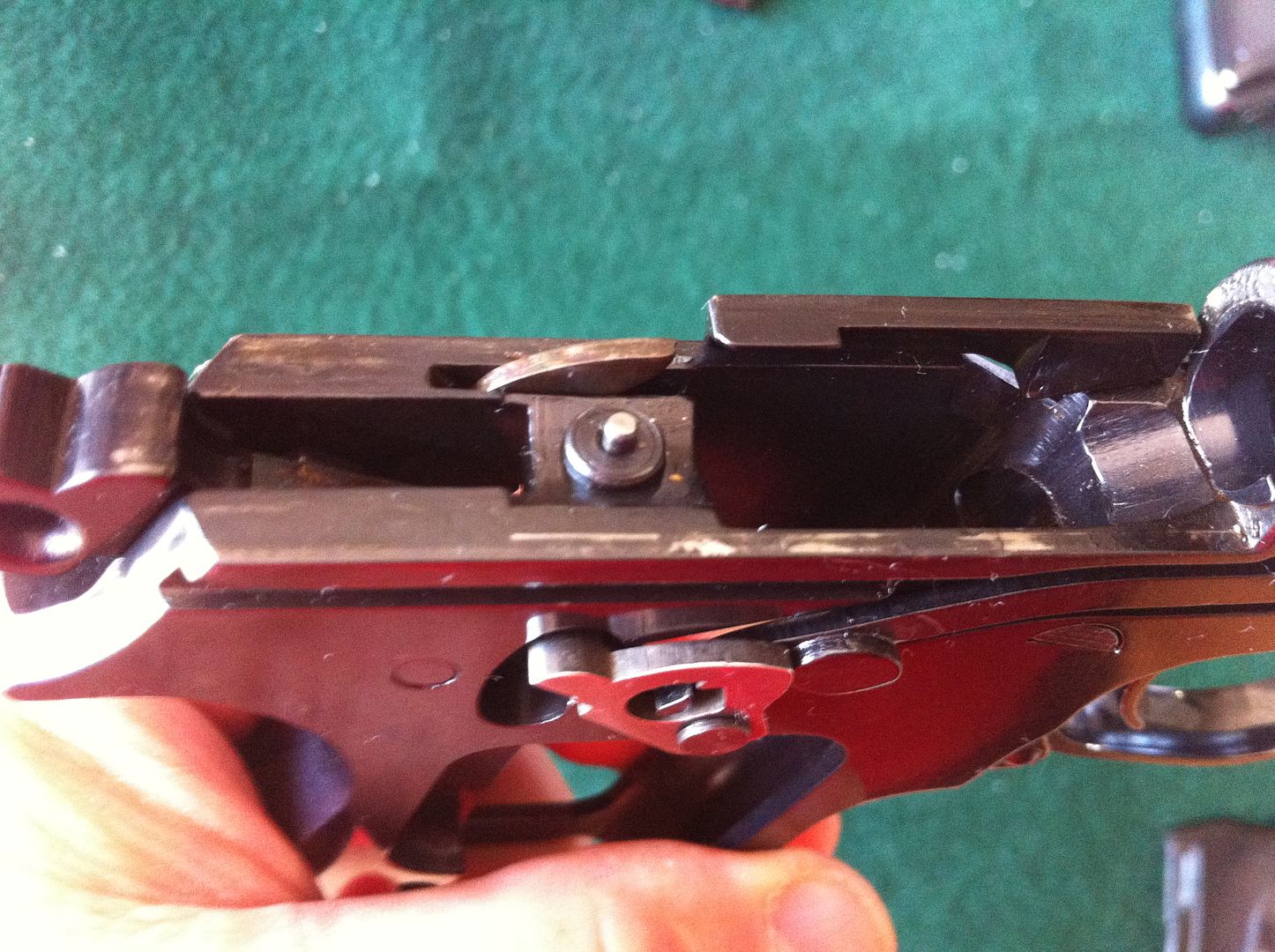Over the last few months I’ve purchased a pair of FÉG Walther clones, one locally and one on GB.
The FÉG clones are not Walther PPs or PPK/Ss and are not finished to the same high standard as a German or French finished Walther, but they are very nice pistols in their own right and they seem to sell for around $300 in new condition, making them very good deals as shooters, given the rising prices of Walther PP series pistols in excellent condition.
The FÉG AP is a PP clone with the same general layout, barrel and slide length, but with a very slightly heavier feel to it, due to a bit more metal in the slide and frame, probably due to chambering of the 9x18mm Makarov in some of it’s predecessors.
My AP is chambered in .380 ACP and when carrying the pistol I noted that it is only slightly heavier than a PP and the additional weight is not readily noticeable. However when shooting it in .380 ACP, the extra weight is appreciated in terms of even better control than the PP offers in the same caliber. In fact, I liked it almost as much as my PP in .32 ACP.
PP (top) and AP (bottom)


My AP was an Interarms import and while the box was missing the pistol appeared to be new and unfired, which is interesting given that Interarms went under almost 20 years ago. The polish on the pistol was very nicely done with a very dark, almost black blued finish. The lines were straight and the flats were flat and the over all impression was of a quality pistol.
The very prominent and nicely done Interarms mark on the slide appears to be intended as more than just an import mark, but rather as a branding of the pistol, along the lines of what they did with their excellent Zastava made Mausers sold as the Interarms Mk X.
The trigger felt very similar to a PP, but with just a bit of almost imperceptible creep. I’d blame this on the firing pin safety, except my APK has the same feel to it, but lacks the firing pin safety. This AP was marked “Mark II” and my suspicion is that this references the firnign pin safety, at least on Interarms branded pistols.
The firing pin safety is a very simple design and appears to be very similar to the safety used on the 48M. The firing pin pivots so that the rear of the pin drops below the face of the hammer until the trigger is pulled. As the hammer comes to full cock it raises almost in line with the hammer and as the trigger comes back after the hammer is released, it rises the rest of the way, creating a pistol that is drop safe if carried with the safety off to a degree that the PP is not.
Firing pin detail in the slide:

Firing pin safety detail in the frame:

Left side detail:

Accuracy was very good for a small pistol with the pistol shooting 1.5” 10 shot groups at the 10 yard line and shooting to point of aim. It’s not quite on par with my PP and PPK/S as both of them will shoot closer to 1” at that range, but it’s still good enough for it’s intended purpose and it seems to be by design.
I’ve noted that the FÉG AP series pistols have comparatively generous chambers in both .32 ACP and .380 ACP, which results in a loss of about 50-70 fps compared to their Walther PP and PPK/S cousins. In addition, the more generous chambers and bores probably account for the slightly decreased accuracy. However the payoff is relentless reliability and a pistol that is by no means a picky eater. My AP ate everything I fed it and ate rounds that would not feed in my PP. There is some cost involved for the reloader as the greater expansion of the brass in the slightly oversized chamber does shorten brass life.
I fired about 150 rounds through the pistol on its first range session and it had zero failures.
My overall impression of the pistol is very favorable. It has slightly sharper and more angular lines than the PP, and the very dark blued finish is slightly less appealing than the rich blue on my Manuhrin PPs, but my Interarms marked AP was still very well made and demonstrated very high quality fit and finish.
Given its mint condition, quality manufacture and excellent performance, the $280 I paid for it, it was almost a steal. Given it’s reliability, accuracy and predictable trigger and reset, I’d seriously consider it as a concealed carry pistol.
 Win a FREE Membership!
Win a FREE Membership!